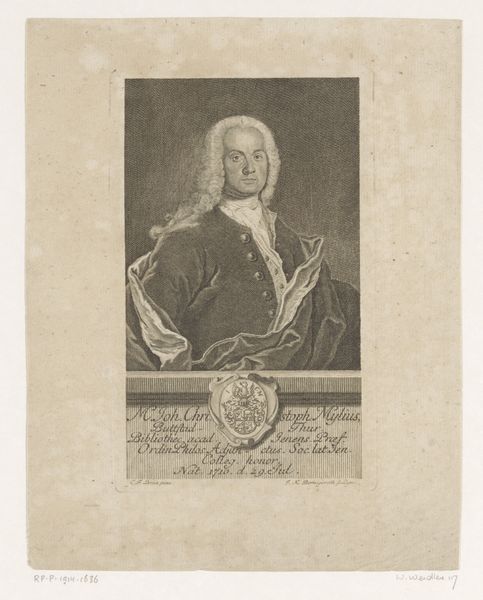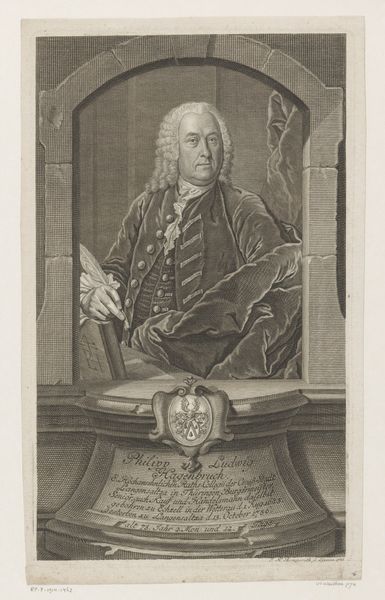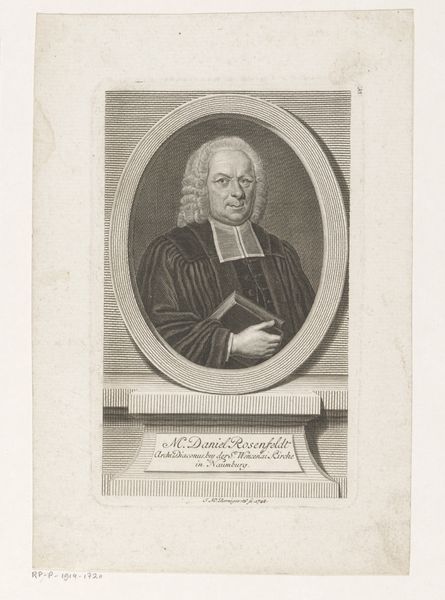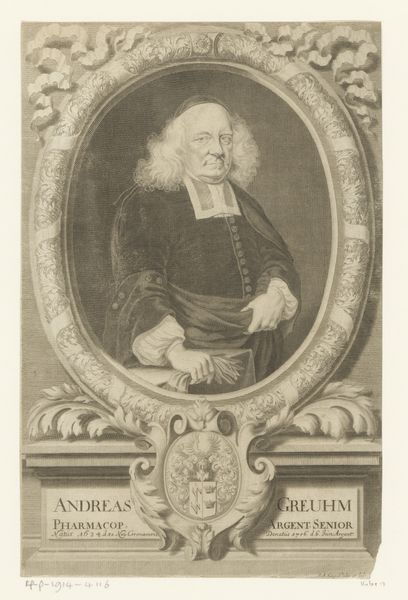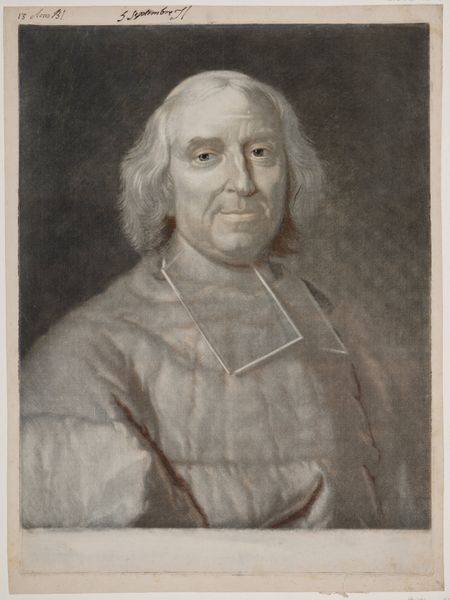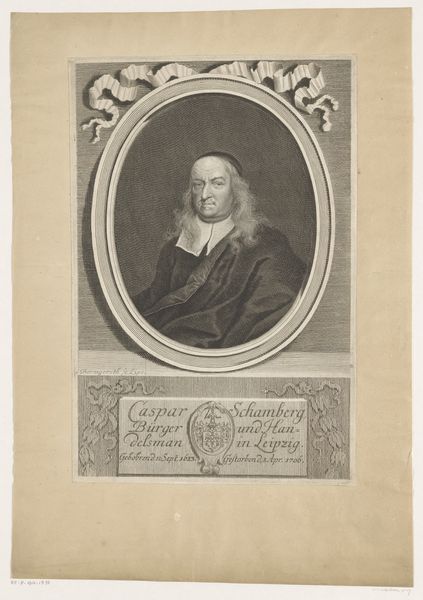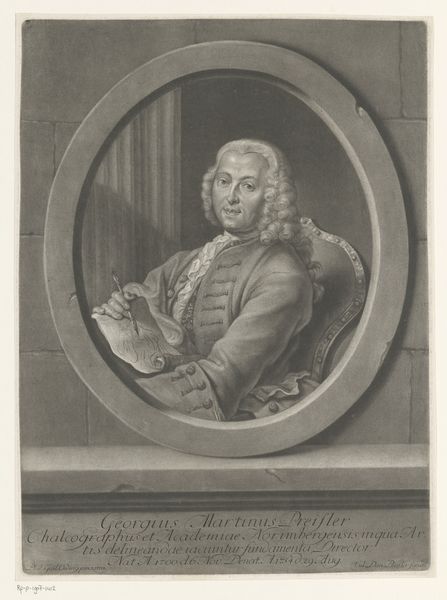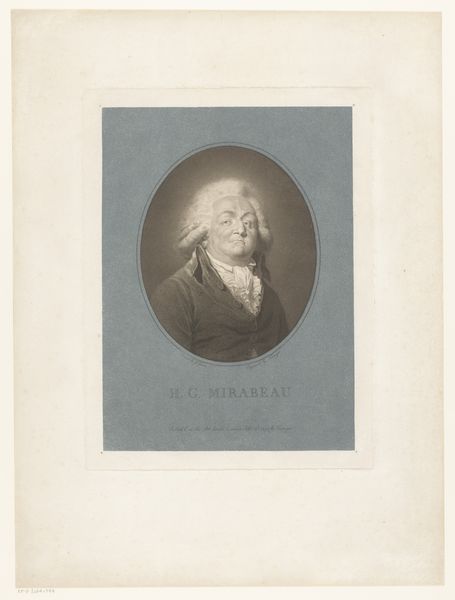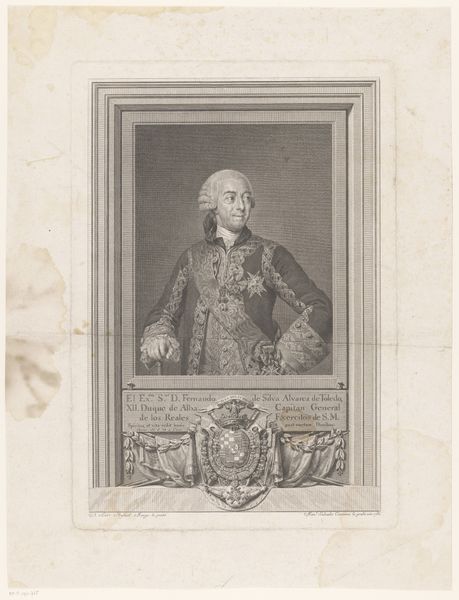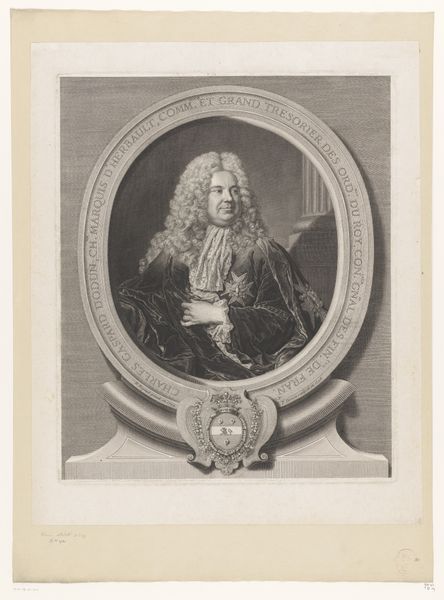
Dimensions: height 350 mm, width 253 mm
Copyright: Rijks Museum: Open Domain
Jacob Houbraken made this portrait of Nicolaas van Tetterode sometime in the 1700s using the technique of etching or engraving. This reproductive printmaking method involves painstaking work. First, the artist coats a metal plate with a waxy, acid-resistant substance. Then, using a sharp tool, they draw an image, exposing the metal beneath. The plate is then submerged in acid, which bites into the exposed lines, creating grooves. Ink is applied to the plate, filling these grooves, and the surface is wiped clean. Finally, the plate is pressed onto paper, transferring the image. The fine lines, the subtle gradations of tone, and the overall precision speak to the skill of the artist. This wasn't just about replicating an image; it was about translating the essence of a person into a graphic form. The very labor involved elevates this from mere reproduction to a work of considerable artistry. This portrait reminds us that even in processes designed for reproduction, the hand of the maker leaves an indelible mark.
Comments
No comments
Be the first to comment and join the conversation on the ultimate creative platform.
